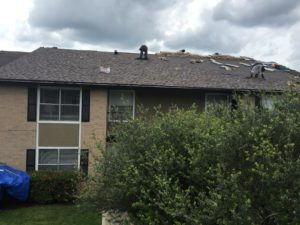 In recent years, a great deal of attention has been given to the impact that humans can have on the environment. One recommendation that is frequently offered is to incorporate trees in the landscaping plans of both residential and commercial buildings. Trees can provide certain benefits, but they are not without their issues. If you are wondering whether to retain existing trees or plant new ones near your commercial building, you might find the following information helpful.
In recent years, a great deal of attention has been given to the impact that humans can have on the environment. One recommendation that is frequently offered is to incorporate trees in the landscaping plans of both residential and commercial buildings. Trees can provide certain benefits, but they are not without their issues. If you are wondering whether to retain existing trees or plant new ones near your commercial building, you might find the following information helpful.
Commercial Roofing & Trees – Pros of Having Trees Near Commercial Buildings
Trees provide shade and shield the roof from heat. This helps improve the efficiency of your cooling system and reduces your energy requirements, which helps reduce greenhouse gases and air pollution resulting from the generation of electricity.
Trees absorb runoff from storms, leading to enhanced efficiency in the management of storm water. The improved efficiency and the natural filtering process provided by the trees means that the water quality can be improved.
Trees can reduce air pollution and filter out a variety of pollutants as well as improve the quality of the air that enters the business. Because they can also muffle sounds from traffic or nearby construction, they help fight noise pollution.
Trees can help reduce upkeep on your pavement. Asphalt pavement under heavy shade will suffer less damage from UV rays; these rays can rob the pavement of moisture as well as fade its color.
Commercial Roofing & Trees – Cons of Having Trees Near Commercial Buildings
Leaves and twigs can quickly fill your gutters. If the gutters become clogged, they can no longer direct runoff safely away from your building. Water may back up under your roofing materials or overflow and damage your exterior walls and foundation.
Tree limbs scraping against the roof can cause damage to flat roofs as well as pitched roofs. In high winds, limbs may fall on the roof and damage it.
Tree roots are a common source of problems. If trees are planted too near the building, their roots can crack or lift pavement, damage the building’s foundation or invade the drainage system.
Reducing Problems and Increasing Benefits
• Consider the size of the mature tree when deciding on a location. Trees that will eventually reach a height of 30 to 70 feet should be planted at least 15 feet away from the building. Allow at least 20 feet for trees that will exceed 70 feet in height. Trees under 30 feet may be as close as 10 feet from the building.
• To optimize the benefits of shade, plant trees on the building’s west side.
• Install gutter screens to help prevent debris from collecting in your gutters. However, depending on the type of screens you install, you may still need to clean your gutters periodically.
• Trim any limbs that scrape against the roof. If a tree that has heavy limbs overhanging the roof appears unhealthy, consider having the limbs removed before they can fall.
• When selecting new trees, pay attention to their characteristics. Some trees produce a network of very long, shallow and fast-growing roots. Other species produce deep taproots. Some trees produce a copious amount of seeds, but others produce nuts that will attract squirrels. By learning about the tree that you are considering, you can determine whether it is the best choice to plant near your building.
Regardless of the type of roof you have on your commercial building, Alpha Roofing can help. We are experts in the repair and replacement of flat roofs as well as pitched roofs. Whether your roof needs BUR, asphalt shingles or a metal roofing system, our crews have the expertise to deliver exceptional results at competitive rates. Our services include the installation of metal roofing systems, asphalt shingles, skylights, and siding as well as chimney repairs, flashing installation and debris removal.
Alpha Roofing is the premier Austin Commercial Roofing contractor in Central Texas. If you have more questions about Commercial Roofing & Trees, or would like a free quote, call us at (512) 777-1086 or submitting the online form.
